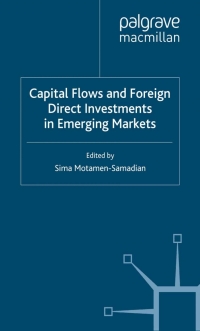Question
Question to answer In problem one, the assumption is the $ revalued against the rupee as indicated in the problem, and that the euro and

Question to answer
In problem one, the assumption is the $ revalued against the rupee as indicated in the problem, and that the euro and the $ move together, in lockstep, in terms of the ER. Presuppose additionally, we know the euro and the $ revalue against the rupee by what is indicated in problem one, and the $ and euro continue to appreciate against the rupee for the next 20 years. Before we presupposed the sales to Europe do not alter due to the rupee depreciation. However, now we make a huge change in the assumptions. How would the results of problem one alter, if we assume that, as a result of the rupee depreciation, sales from India to Europe rise inter temporally for 20 years. Furthermore, presuppose the sensitivity of demand is high for the Indian product in Europe (how European customers see it.) Elaborate on the possible altered effect of the NPV of the Indian investment.
Note the only geographical areas involved are India, Europe and the US. Treat Europe and the US as one entity. There is NO OTHER COUNTRY.
Natural Mosaic Company (U.S.) is considering investing Rupees 50,000,000 in India to create a wholly owned tile manufacturing plant to export to the US market. After five years, the subsidiary would be sold to Indian investors for Rs100,000,000. A pro forma income statement for the Indian operation predicts the generation of Rs7,000,000 of annual cash flow, is listed in the following table. The initial investment will be made on December 31, 2011, and cash flows will occur on December 31st of each succeeding year. Annual cash dividends to Philadelphia Composite from India will equal 75% of accounting income. The U.S. corporate tax rate is 40% and the Indian corporate tax rate is 50%. Because the Indian tax rate is greater than the U.S. tax rate, annual dividends paid to Natural Mosaic will not be subject to additional taxes in the United States. There are no capital gains taxes on the final sale. Natural Mosaic uses a weighted average cost of capital of 14% on domestic investments, but will add six percentage points for the Indian investment because of perceived greater risk. Natural Mosaic forecasts the rupee/dollar exchange rate for December 31st on the next six years are listed belowStep by Step Solution
There are 3 Steps involved in it
Step: 1

Get Instant Access to Expert-Tailored Solutions
See step-by-step solutions with expert insights and AI powered tools for academic success
Step: 2

Step: 3

Ace Your Homework with AI
Get the answers you need in no time with our AI-driven, step-by-step assistance
Get Started


